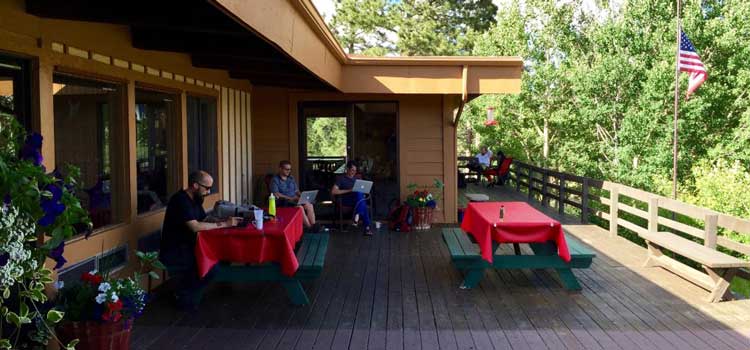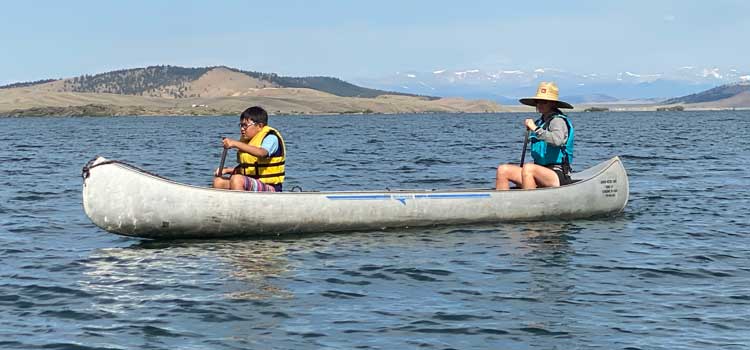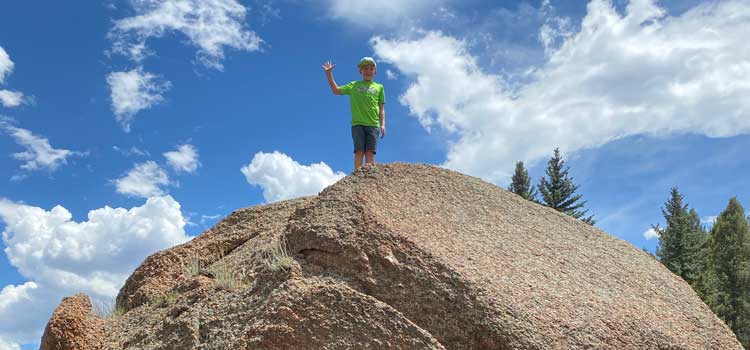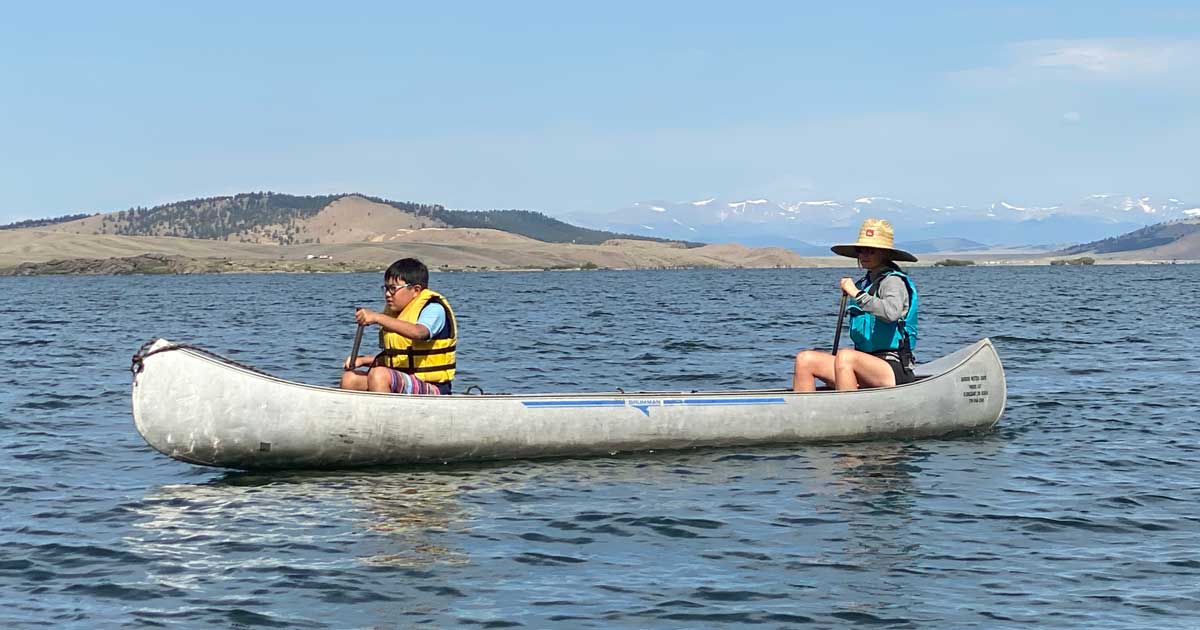When the pandemic sent everyone into lockdown in early 2020, our Client Success Team made 885 calls to our clients to understand the summer camp and COVID-19 decisions. According to the data they gathered, 62% of camps chose to cancel their 2020 programs. Each closure caused many repercussions, two of the most significant being lost income and lost camper connections. In our conversations with many directors of these closed camps, we’ve heard a lot about ways they are offsetting the financial hit while also maintaining some connections to camp communities. A trend that has emerged is camps pivoting to new programs to recover lost revenue and increase engagement with kids and families.
One camp that is modeling this approach is Sanborn Western Camps, located in Florissant, Colorado, and part of the Colorado Outdoor Education Center (COEC). Ariella Rogge – the co-director of High Trails Ranch, Sanborn’s all-girls camp – says that in early March it was obvious to the year-round team at Sanborn that camp wasn’t going to look the same. While many camps waited until early summer to announce their closures, Sanborn made the call on May 6.
In the weeks that followed, Rogge and the rest of the Sanborn team jumped right into the pivot approach by creating three new programs: day hiking and camping on the property, a family retreat, and Work in the Woods. What has struck her the most is how much this summer still had moments that felt like camp, despite being so different.
Repurposing camp property for a family retreat, camping, and day hikes

The first new program offered at Sanborn were opportunities for alumni and camp families to utilize the property during the summer months when camp would typically be in session. Sanborn serves campers and staff from 45 states and 10 countries, but also has a substantial number of attendees from Colorado. The Sanborn leadership reached out to their existing in-state network in late May and offered these overnight camping and day hiking opportunities. The interest was encouraging – people have signed up to hike every day, and nearly all have made the suggested donation of five dollars per person. The campsites have been booked almost every weekend of the summer.
Building on this success, the team reached out to the Sanborn community again and announced plans for a Family Retreat in July at The Nature Place – the conference and retreat center on site. Sanborn staff saw this as a way to use this resource effectively, which had no bookings since early March. Twelve families totaling 42 participants signed up for the five-night, six-day retreat. During the retreat there was no communal transportation to trails and activities, and everyone was required to wear masks. Even with these modifications, the Sanborn staff was able to lead programming such as ropes course and horseback riding, just like they would in a typical summer.
The cancellation of summer camp during COVID-19 created a significant financial gap, but even still these retreats were not expected to be huge money-makers. The team’s goal was for this income to cover a few small expenses for general upkeep projects. The biggest benefit has been the long-term connections made with kids who are not yet Sanborn campers. The demographic of the family retreat included many kids younger than Sanborn’s regular age groups. Rogge says that many of these kids on the camp age cusp told their parents that Sanborn is where they want to be next summer. The importance of spreading their camp’s good reputation is not lost on the entire Sanborn team.
The Sanborn leadership reached out to their existing in-state network in late May and offered these overnight camping and day hiking opportunities. The interest was encouraging – people have signed up to hike every day, and nearly all have made the suggested donation of five dollars per person.
The second summer camp and COVID-19 pivot: using rental space for remote workers

The team’s next goal was to find another way to increase the use of The Nature Place. Groups who reserve The Nature Place typically have to do so two years in advance, and many companies and organizations return annually. With all the rentals from March through June cancelled, and ongoing attrition of groups in the late summer, the team at Sanborn and The Nature Place realized they could create a way to fill gaps between the bookings that remained with a new group of renters – people who can do their remote work from camp. That’s how Work in the Woods came to life.
Rogge likes to think of the program as providing gorgeous real views in place of virtual backgrounds. Standard rooms and larger suites on the property can be rented for two-night minimums and cost between $175 and $275 per night. Those who sign up can also request meals from the kitchen, though each room does have a mini fridge and renters can bring their own camp stoves.
Beyond the amenities, participants are encouraged to take advantage of everything Sanborn has to offer. They can hike, bring their own bikes for mountain biking, and even book horseback trail rides. Limited dates are available now, but Rogge says that as the fall schedule unfolds at The Nature Place, more openings will be added.
Doing what needed to be done to make it through 2020

All three of COEC’s programs – summer camps, outdoor education programs in spring and fall, and the conference and retreat center – were hit hard by the pandemic. The lost income forced COEC to furlough many hourly staff members, some of the year-round team, and institute pay cuts across the board.
As COEC had to make these hard staffing decisions, Rogge and the Sanborn team also had to make professional pivots. She spent one day moving logs and trees, another fielding calls and emails related to 2021 enrollments, and another serving meals. It’s often said that camp people wear lots of hats – Rogge says that was even more true this summer. Whatever the organization needs, they do it, and with a sense of passion. In her mind the challenge was to be creative, be optimistic, and be willing to get down to your roots, because that is the only way camp is going to survive. That way of thinking is what motivated the team to help create these new programs and on-site opportunities.
Rogge likes to think of the program as providing gorgeous real views in place of virtual backgrounds.
Financial recovery beyond summer camp and COVID-19

The combined income from all the new programs won’t cover all or even a small percentage of Sanborn’s lost fees. Knowing this, one of the organization’s main goals has been to try and get a little revenue to support some of the hourly staff, such as cooks and other maintenance workers. Operationally, it’s important to keep these workers in the fold due to the challenges of finding enough employees in Sanborn’s rural area. More importantly, the leadership team has long-term relationships with these workers, all of whom depend on this seasonal work, and their knowledge and commitment to camp are invaluable.
Rogge also says that upholding Sanborn’s responsibility to the local community was another goal this summer, and a major factor in the decision to cancel regular programming. The summer camp increases the county’s population by nearly 5%. She knew that an outbreak would not only impact the health of those on the property, but everyone living around it as well.
This summer’s decisions will inform future summers

Like so many of the camps we spoke with earlier this year, Sanborn’s decision to close wasn’t just about the 2020 season, but about the summers to come as well. As they look ahead, Rogge and her team are focused on things they can do now to prepare for 2021. They’re creating plans for how camp can function on different session schedules and they’re even doing some forest fire mitigation on the property.
As they pivot to new programs, they are closely keeping track of what didn’t work this summer, and what worked better than expected. This knowledge will inform programs and staffing in 2021 and beyond.
This process has been one of the biggest challenges Rogge has faced in her years as a camp professional, but has also made evident the team’s creativity and resilience. If she had to pass on any words of wisdom to her peers it would be to realize that part of a pivot is a shift in trajectory which opens additional doors and opportunities, but that no matter what changes are instituted, camp can still feel like camp.
